Key takeaways
- Docker container orchestration simplifies managing multiple containers, enhancing deployment efficiency and reliability.
- Key concepts include clusters for efficient teamwork, automatic service discovery, load balancing, and self-healing capabilities.
- Challenges often involve network complexity, dynamic scaling issues, and the need for robust health checks and monitoring strategies.
- Advanced techniques like rolling updates, custom plugins, and autoscaling significantly improve application management and responsiveness during traffic fluctuations.
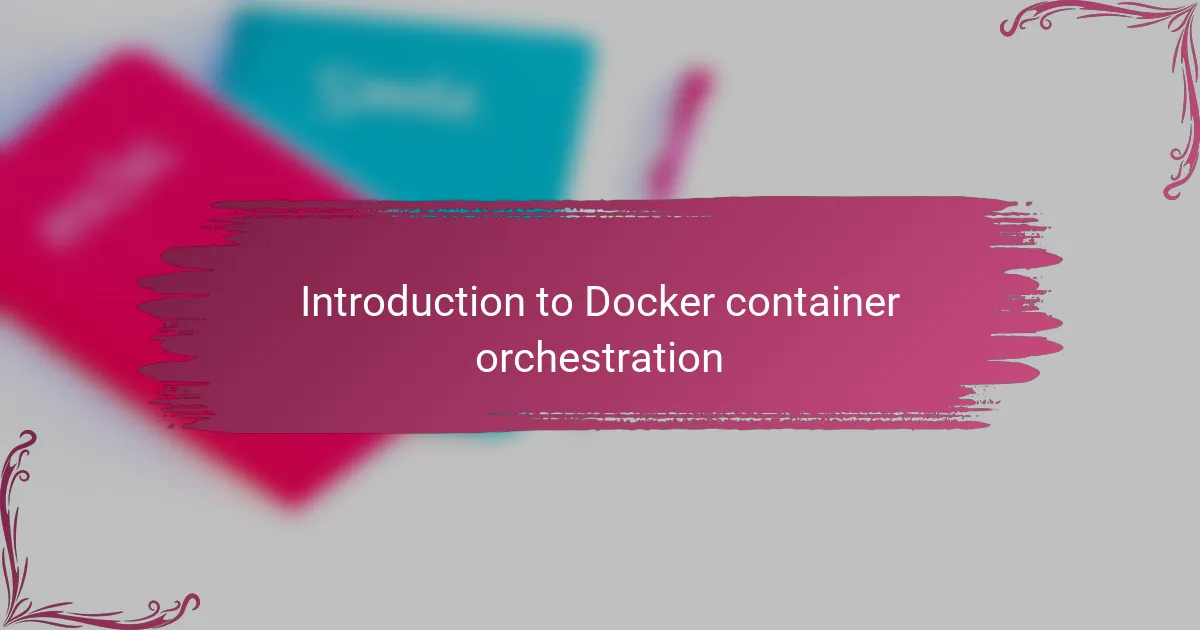
Introduction to Docker container orchestration
When I first encountered Docker container orchestration, I was fascinated by how it simplified managing multiple containers at scale. It felt like finally having a reliable conductor for a chaotic orchestra of microservices. Have you ever struggled with keeping track of numerous containers running simultaneously? That’s exactly where orchestration steps in.
From my experience, container orchestration isn’t just about automation; it’s about creating a seamless workflow that keeps applications running smoothly, even when faced with failures or unexpected spikes in demand. The tools coordinate tasks like deploying, scaling, and networking containers, which otherwise could become overwhelming very fast. It’s almost like having a skilled traffic controller for your application environment.
Understanding the basics of Docker container orchestration opened up new possibilities for me, such as improving deployment efficiency and reducing downtime. It made me appreciate the complexity behind seemingly simple apps and the importance of reliable infrastructure management. If you’ve ever wished for a way to simplify container management, orchestration might just be the answer you’re looking for.
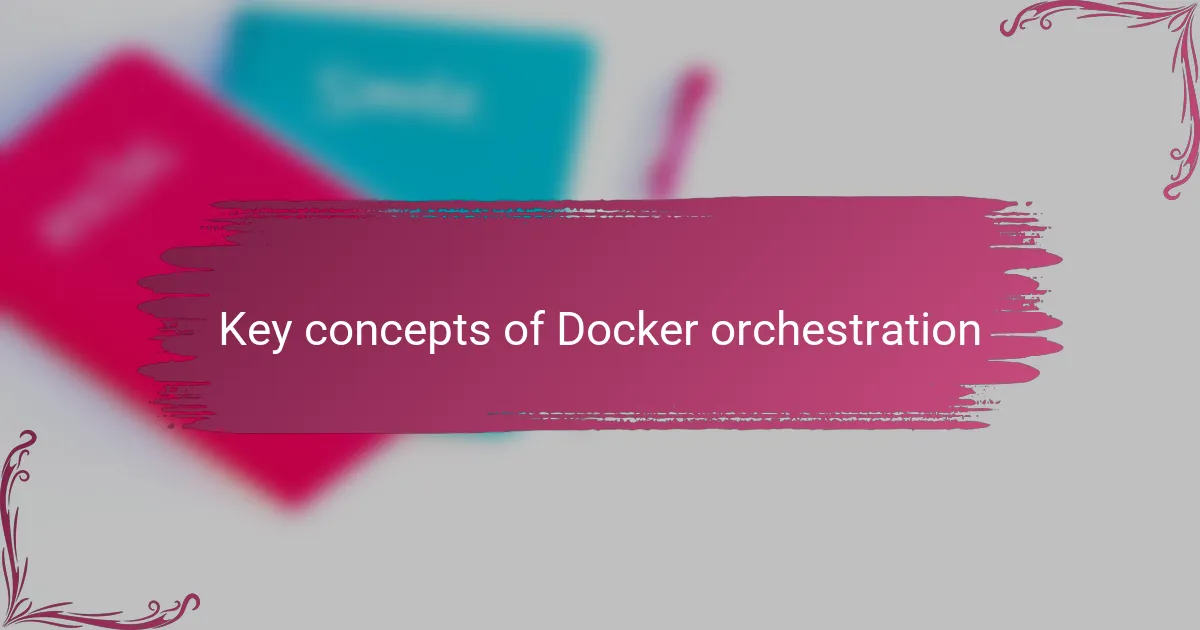
Key concepts of Docker orchestration
One of the first key concepts I had to wrap my head around was the idea of a cluster—a group of machines working together to run containers. It felt like assembling a team where each player knows its role, ensuring the entire system performs efficiently. Have you ever coordinated a group project and wished everyone just knew what to do? That’s essentially what a cluster does for Docker containers.
Another core idea that struck me was service discovery and load balancing. Instead of manually pointing traffic to containers, orchestration tools automatically find the right containers and distribute work evenly. This was a game-changer for me, especially when handling sudden traffic spikes where manual intervention just isn’t feasible.
Perhaps the most reassuring concept I encountered was self-healing. Imagine having a system that detects when one of your containers fails and replaces it without you lifting a finger. That reliability gave me peace of mind, knowing my applications could bounce back from issues automatically. Doesn’t that feel like the pinnacle of automation?
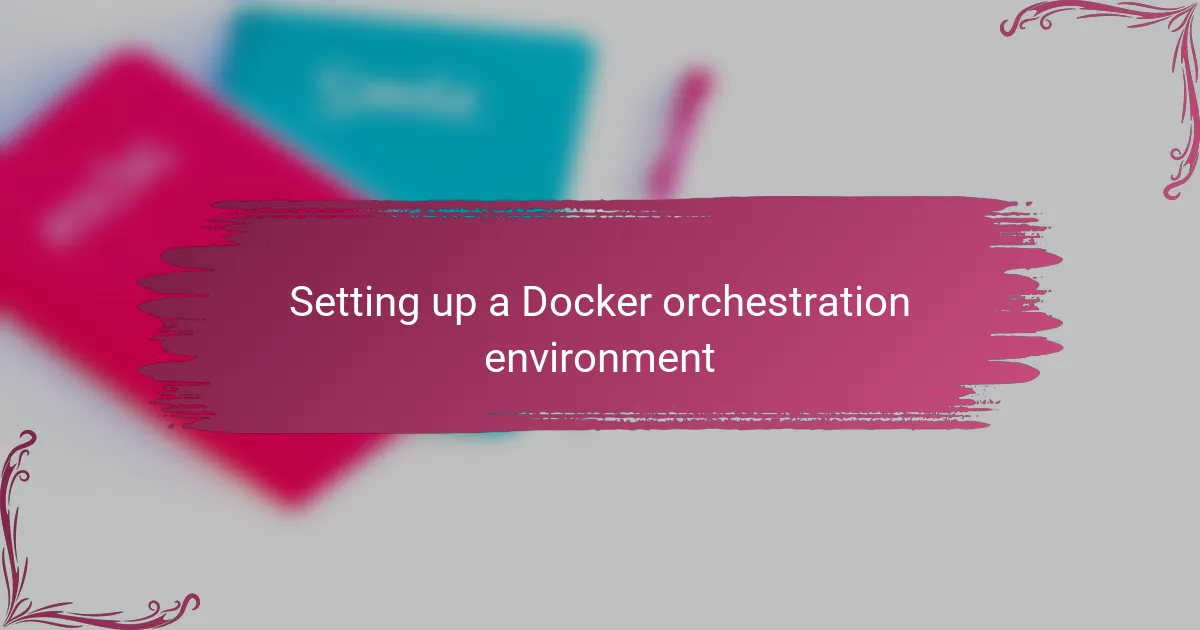
Setting up a Docker orchestration environment
Setting up a Docker orchestration environment was one of those moments where theory met reality for me. I remember juggling the installation of Docker Swarm across several nodes, wondering if I’d missed a crucial step as the swarm managers began communicating effortlessly. Have you ever felt that mix of relief and excitement when something complex just clicks into place?
Configuring the environment involved defining services and networks in a way that allowed containers to discover each other automatically. It was fascinating to see how easily the orchestrator handled scaling up services during testing, almost as if the infrastructure was reading my mind and adjusting without me asking. That instant feedback loop made me appreciate orchestration beyond just its automation benefits.
Of course, it wasn’t all smooth sailing—I ran into a few hiccups with network configurations that initially stopped containers from talking to each other. But troubleshooting those issues deepened my understanding and made the eventual success even sweeter. Have you also found that overcoming early obstacles often leads to the most solid grasp of new tools? I certainly have.
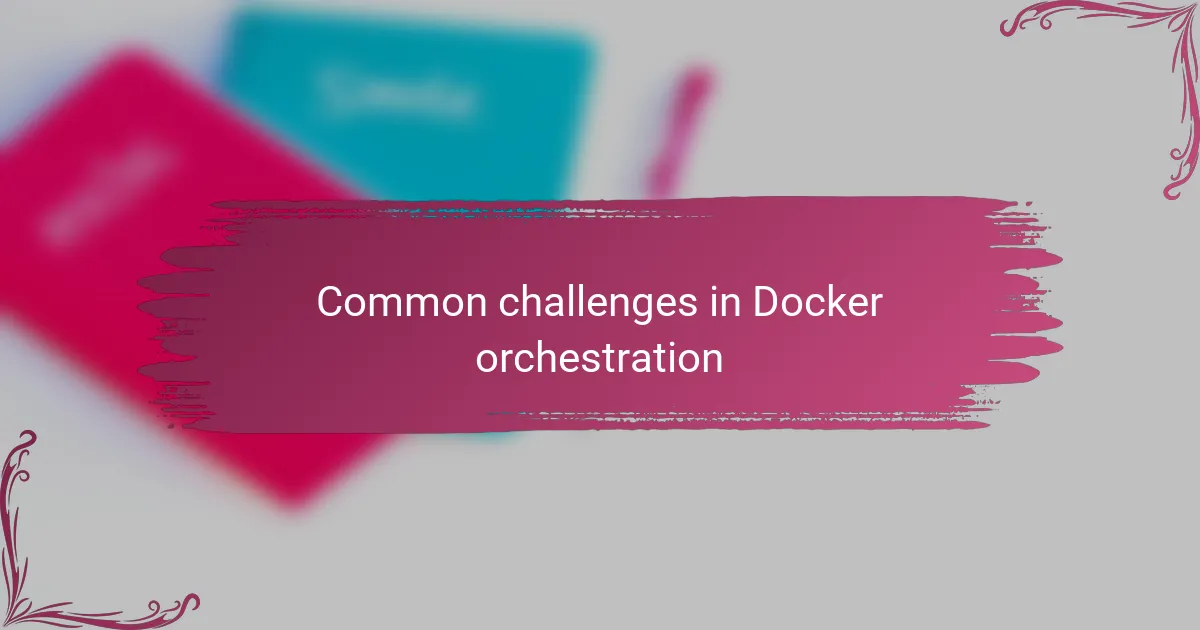
Common challenges in Docker orchestration
One challenge I often faced was handling the complexity of configuring networking between containers. At times, it felt like I was wrestling with invisible wires, trying to ensure every container could communicate without delays or drops. Have you ever spent hours troubleshooting network settings only to realize a tiny option was off? That frustration became a familiar part of my orchestration journey.
Scaling services dynamically also brought its own headaches. I remember a moment when I triggered a scale-up, expecting a smooth transition, but instead encountered unexpected downtime because the orchestrator didn’t redistribute the load as I had hoped. It made me realize orchestration tools are powerful but require careful planning and monitoring to avoid surprises.
Service discovery, while conceptually elegant, sometimes felt less reliable in practice. There were instances where the orchestrator failed to update service endpoints promptly, leaving requests hanging or failing altogether. That unpredictability taught me the importance of adding robust health checks and fallback strategies to keep the system resilient. Have you ever wished orchestration came with a magic wand to fix all these quirks instantly? I certainly have.
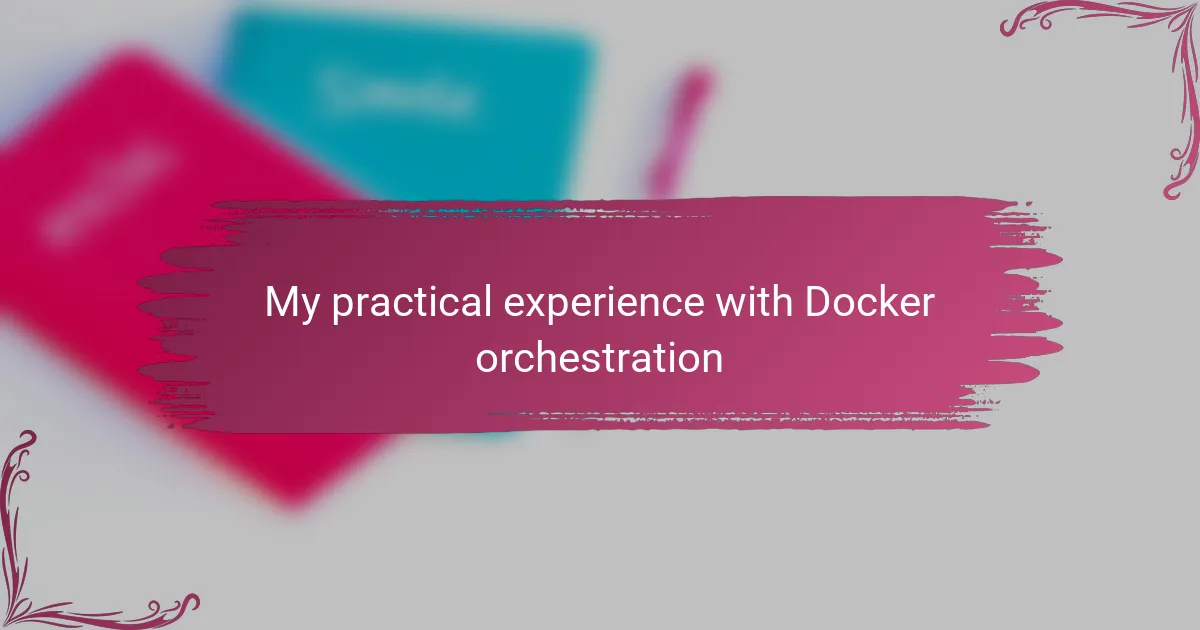
My practical experience with Docker orchestration
Working with Docker orchestration in a real-world project truly highlighted its strengths and quirks for me. I recall deploying a complex microservices app where the orchestration seamlessly handled scaling during peak loads, letting me focus more on development than firefighting infrastructure. Have you ever experienced that satisfying moment when scaling happens automatically without a hitch? That was exactly how I felt.
At the same time, I ran into moments where container health checks didn’t behave as expected, causing brief outages. It was frustrating but also a valuable lesson on why monitoring and fallback mechanisms are essential. These hands-on challenges gave me a deeper respect for what orchestration tools accomplish behind the scenes.
What struck me most was how orchestration turned from a theoretical concept into a practical lifeline for maintaining application reliability. Instead of juggling containers manually, I watched the orchestrator act almost like a tireless assistant—constantly adjusting, healing, and optimizing. Isn’t that the kind of help any developer would welcome?
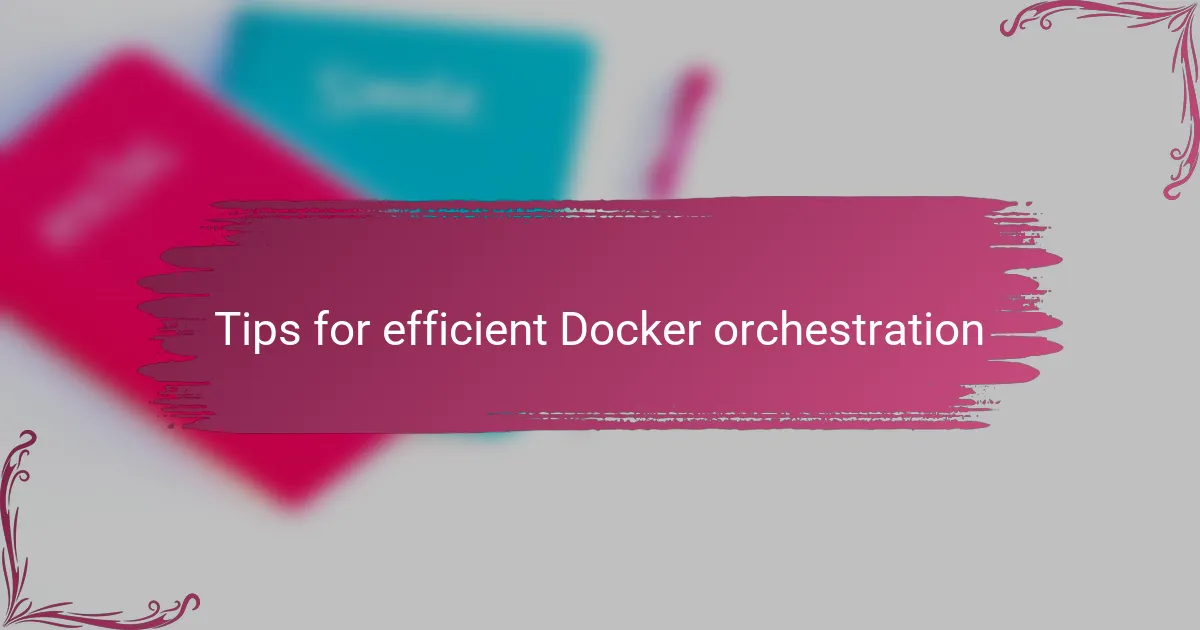
Tips for efficient Docker orchestration
One tip that really saved me a lot of headaches was to keep container images as lean as possible. I learned the hard way that bloated images slow down scaling and increase the chance of deployment errors. Have you ever waited forever for a container to start only to realize its image was enormous? Trimming those images made orchestration feel faster and more responsive.
Another insight I gathered was to define clear resource limits for each container. Without proper CPU and memory constraints, you risk one container hogging resources and hurting the overall system’s stability. It reminded me of a time when a runaway process practically brought down my whole cluster—setting limits kept that chaos in check.
Finally, I can’t stress enough the value of thorough health checks and readiness probes. Early on, I skipped fine-tuning these and ended up with flaky service availability. Adding well-configured health checks helped the orchestrator detect problems sooner and restart containers before they caused noticeable disruptions. Isn’t it reassuring when the system can self-heal quietly behind the scenes? I know it gave me peace of mind.
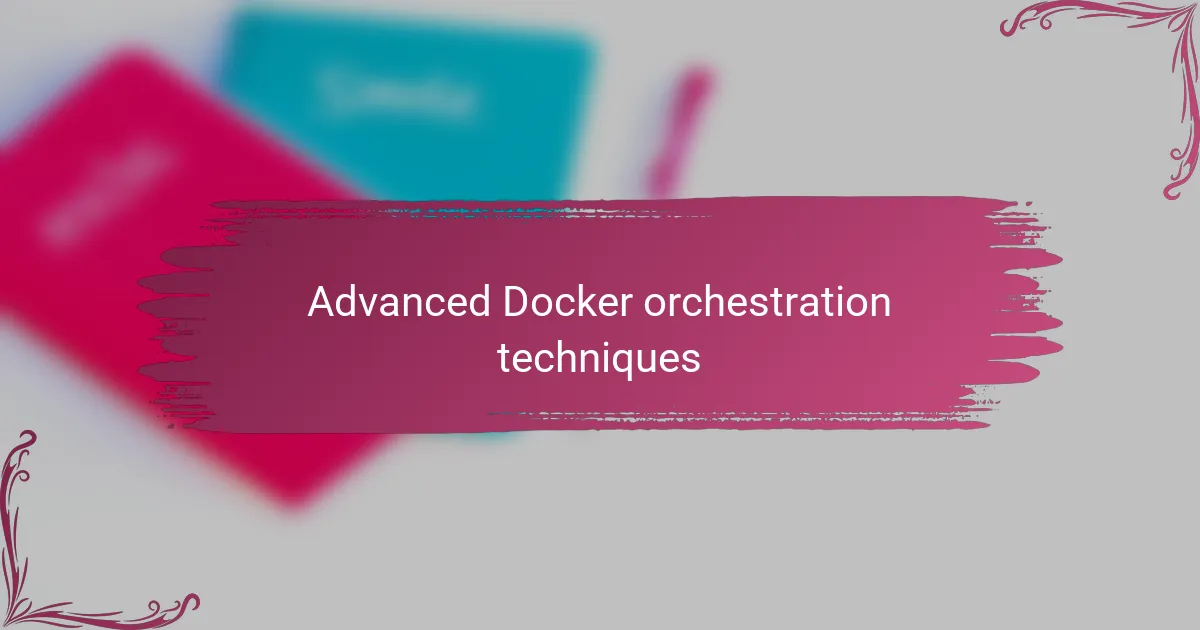
Advanced Docker orchestration techniques
Diving into advanced Docker orchestration techniques felt like unlocking a new level in container management for me. Features like multi-node deployments and rolling updates weren’t just buzzwords—they transformed how I handled application upgrades without downtime. Have you ever held your breath during a deployment, hoping nothing breaks? Implementing rolling updates helped me breathe easier knowing traffic smoothly shifted to updated containers.
Another technique that caught my attention was the use of custom orchestration plugins and network overlays. These allowed me to tailor communication pathways between services, improving both performance and security. At first, it felt overwhelming configuring these overlays, but the payoff was clear: more granular control and isolation where I needed it most.
Then there’s the magic of autoscaling based on real-time metrics. Setting up rules that automatically adjust container counts depending on load was like giving my infrastructure a mind of its own. I remember the thrill when I saw my orchestrator spin up extra containers during a sudden traffic spike without any manual intervention—proof that advanced orchestration can truly anticipate and react faster than I ever could manually.